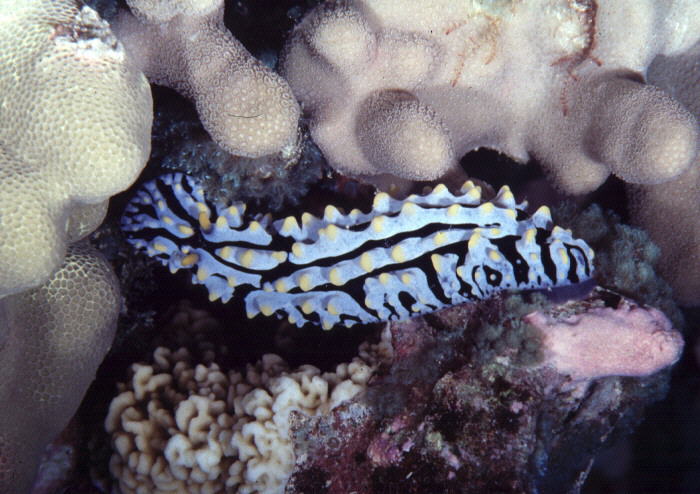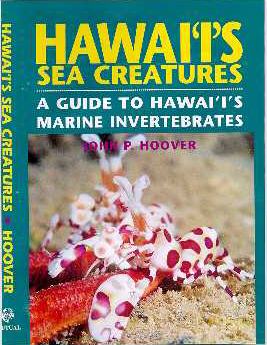 |
Phyllidia varicosa
Phyllidia varicosa Lamarck, 1801
Family Phyllidiidae
The phyllidiids are a group of firm, tough-bodied dorids in which the usual circlet of gills around the anus are replaced by leaflike secondary gills under the mantle skirt. Their backs are covered with hard bumps and ridges, often brightly colored. Typically poisonous, they have no known predators and are probably the most frequently-seen tropical Indo-Pacific nudibranchs. This species, the most common and conspicuous member of the family in Hawai`i, has a black body covered with pale blue ridges upon which are rows of orange- or yellow-tipped bumps. It is sometimes called the "scrambled egg nudibranch." When disturbed it secretes a toxic and very pungent mucus. (Do not place this, or any other phyllidiid in your aquarium!) Specimens from O`ahu, and their prey sponges Hymeniacidon sp., contain a chemical poisonous to fish and crustaceans. Scientists named it 9-isocyanopupukeane after the dive site, Pupukea, on O`ahu's north shore. The species attains at least 3.5 in. (most are half that size) and has a broad Indo-Pacific distribution. A very similar species of Phyllidia from Hawaiian waters remains unnamed.
Photo: Kailua-Kona, Hawai`i. 30 ft.
Text courtesy of John Hoover

Hawaii's Fishes, a Guide for Snorkelers, Divers and Aquarists Mutual Publishing, 1993 Hawaii's Underwater Paradise, Mutual Publishing, 1997 Hawaii's Sea Creatures, a guide to Hawaii's Marine Invertebrates. Mutual Publishing, 1999. John's books are available through Sea Challengers !
Send John E-Mail at hoover@hml.org |
